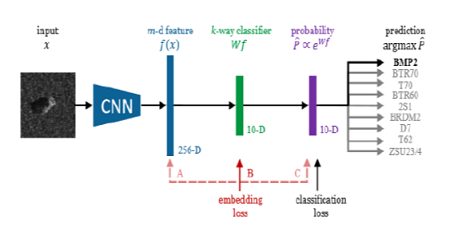


Indian Journal of Science and Technology
Year: 2022, Volume: 15, Issue: 9, Pages: 371-385
Original Article
Nagarajan Selvam1*, Yonatan Nagesa2, Fikiru Negesa3
1Faculty, Department of Computer Science, Ambo University, Ethiopia
2Research scholar, Department of Computer Science, Ambo University, Ethiopia
3Research scholar, Department of Health Informatics, Ambo University, Ethiopia
*Corresponding Author
Email: [email protected]
Received Date:12 August 2021, Accepted Date:21 January 2022, Published Date:05 March 2022
Objective: - To reduce training and testing time in SAR image detection and recognition using optimization algorithm. Methods: SAR images have achieved a prominent position in the arena of remote sensing and satellite technology. SAR image processing has many applications in different areas like agriculture, mineral exploration, resource management and environmental monitoring. To carry out this research works, MSTAR dataset was were used with six classes. The collected dataset was preprocessed with filtering algorithms to remove the speckle noise from the image. Then, image segmentation which is essential expertise for image processing has been done with aim of rationalizing and changing image representation into more meaningful and easier to analyze. The characters of Hue, Intensity, Saturation (H, I, S) were applied to acquire the information of the pixels of the target image. By doing so, color information and edge extraction were done, since it was the basic idea to achieve the segmented image from its background. Next, feature extraction has been done using DNNs through three stages (Low, middle and high level feature extraction). At low level feature extraction, the image edge and lines were extracted while image front or noses were extracted at middle level feature extraction. Then, all image features were combined at the high level feature extraction and thus all features were combined to form high-level features, because they were primitive images features. After doing all the above, detection has been done to locate the presence of objects in an image using bounding box regression model. Finally, for the SAR image recognition, the pre-trained CNN models such as ResNet-50, AlexNet, and VGG16 were used to compare their performance with the proposed model. In SAR image detection and recognition, the high training and testing time is founded as a challenging. Thus, to reduce such long training and testing time of SAR image detection and recognition, optimization algorithms such as Stochastic Gradient Descent with Momentum (SGDM), RMSProp and Adam optimization methods were used with the pre-training and proposed CNN model. Findings: Preprocessing was carried out using Median, Guided Filter (GF), Lee, Box, Adaptive or Wiener filter algorithms were used and their performances were also compared in PSNR, SNR and MSE values and from those all used algorithms, the GF achieves better performance in high PSNR value of 37.8342. The performance of the all three pre-trained models and the proposed models were compared in accuracy and speed. The AlexNet, ResNet-50, VGG16 and proposed models achieved accuracy of 89%, 92%, 86% and 95% respectively and proposed model achieved the best performance. Among the used four models with Optimization methods, the Proposed Model with SGDM took very least time for Training (26’ and 49s) and for Testing (17s). Novelty: New Deep Network Model was successfully designed, developed and used along with Optimization algorithms for reducing the training and testing time in SAR image detection and recognition.
Keywords: ResNet50; VGG16; SAR image; Optimization algorithms
© 2022 Selvam et al. This is an open-access article distributed under the terms of the Creative Commons Attribution License, which permits unrestricted use, distribution, and reproduction in any medium, provided the original author and source are credited.
Published By Indian Society for Education and Environment (iSee)
Subscribe now for latest articles and news.